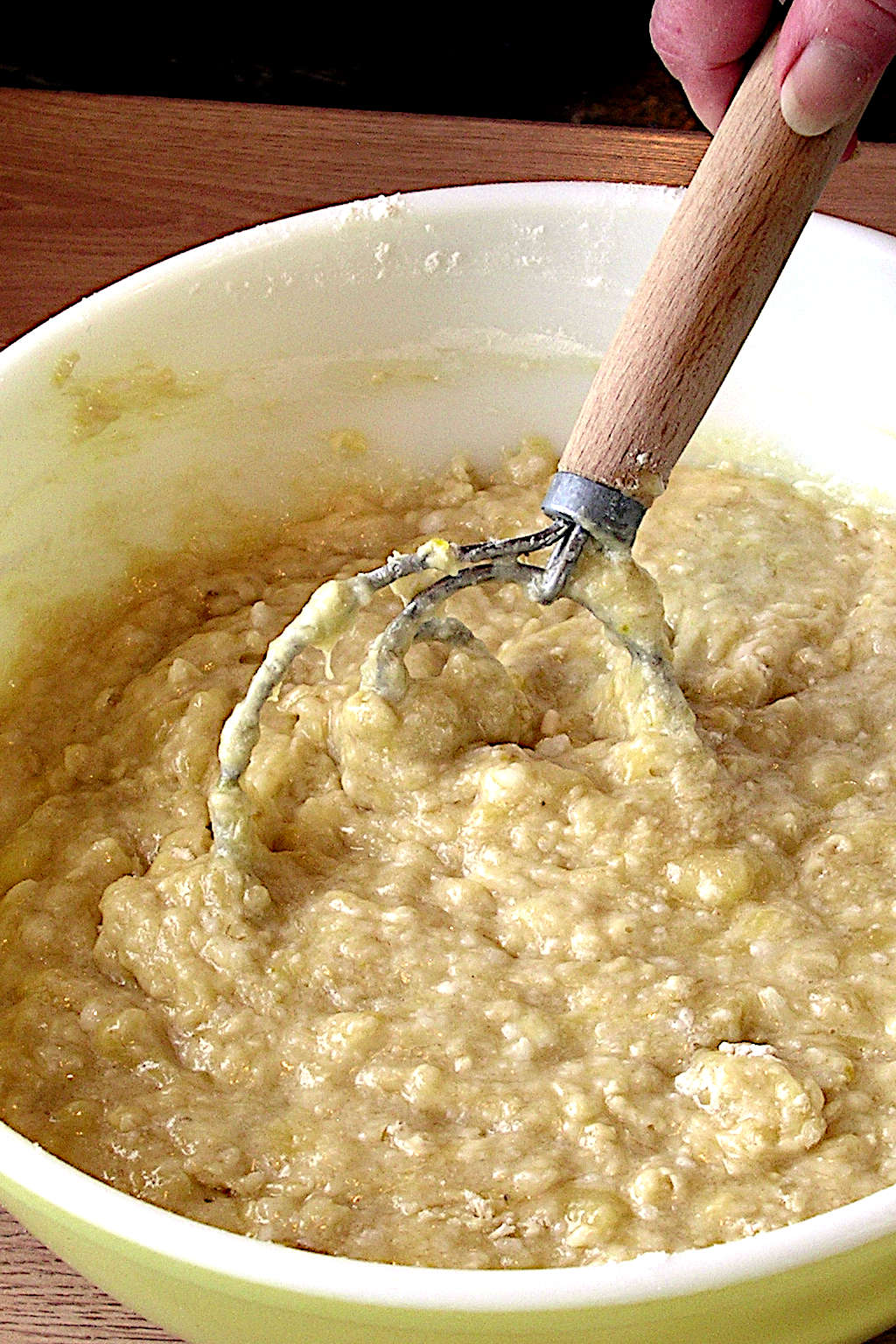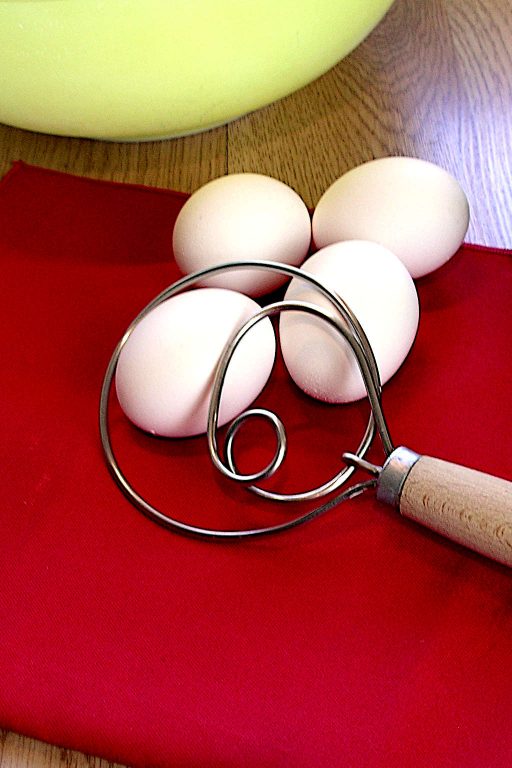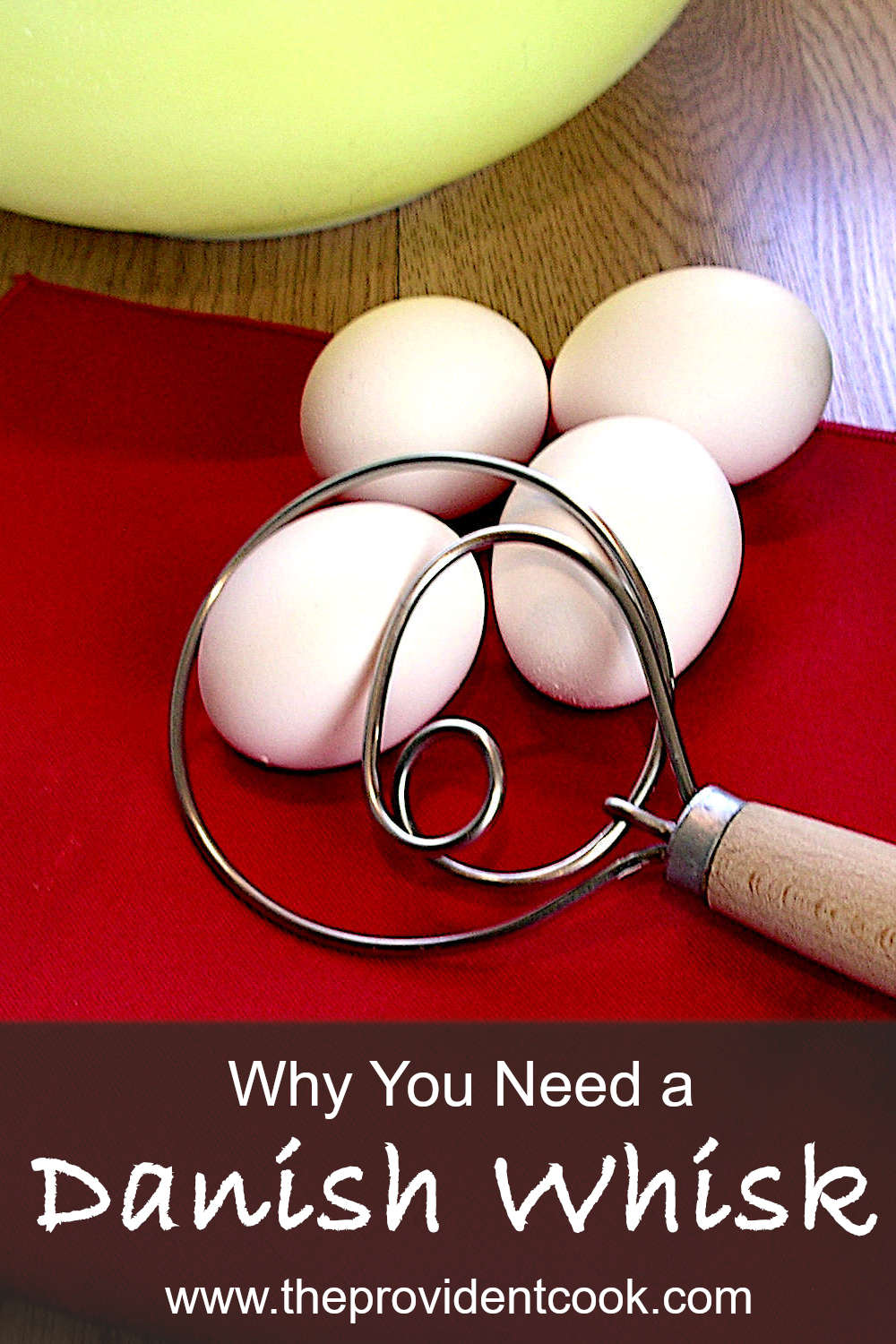A Danish whisk might seem like a frivolous luxury, something you’d use only rarely. But if you make pancakes, waffles, or even quick breads, it’s the best kitchen tool for the job.
Our friend Jennifer is fascinated by gadgets of all kinds, and over the years she’s given us at least a couple that I can remember. One notable gadget-gift was a lug-nut cleaning brush. (Yes, it’s actually a thing!)
My favorite Jennifer-gift by far, though, is a Danish whisk. What, you ask, is a Danish whisk? Yeah, at the time she gifted us with ours, I had no clue. I thanked her profusely though, and it promptly went into our kitchen gadget drawer. Where it sat. For a couple of years.
What’s a Danish Whisk?
One day, though, I ran across an article that described the virtues of a Danish whisk. The first time I tried it, I was amazed at how efficiently and thoroughly it works for batters, bread dough, meatloaf, and almost anything else that’s batter-y or liquid-ish.
It’s a very old design, attributed to Denmark (though some may call it a Polish whisk, since many are manufactured there). In its native land, it’s called a brodpisker, or literally, “bread whipper.”
As you can see in the image above, it’s made of a thick, stiff metal “coil” on its working end. It’s a little hard to see in the pic, but the little “loop-de-loop” near the base actually sticks out a little in front of the bigger loop. This, I think, is the genius in the design. It’s amazing to me that someone, somehow, came up with the perfect pattern.
The Best Things About It
Here’s why I love my Danish whisk, in no particular order:
- Strong, heavy-duty construction. It can handle even thick doughs and batters. Basically, your arm will wear out before a Danish whisk will 🙂
- So easy to clean. The smooth steel whisk head doesn’t seem to accumulate much, if any, of the batter, so it’s really easy to clean. Unlike a spoon or your hands.
- Mixes very efficiently. The funny-looking mixing head will mix your wet and dry ingredients in just a few strokes. Overbeating is the chief cause of tough quick breads, pancakes, waffles, etc. A Danish whisk can help avoid that.
- Avoids unmixed dry ingredients. It’s so disappointing when you have a beautiful loaf of banana or other quick bread just out of the oven, only to cut into it and find pockets of dry flour or other dry ingredients. This whisk easily gets into all the curves and across the bottom of the mixing bowl to defend against this.
- Inexpensive. Most online listings for this kitchen tool are under $15.

I couldn’t resist sharing a photo of my Danish whisk in action on a bowl of banana-nut bread batter. I use it regularly on pancake and waffle batters, quick breads, cake batters and other semi-liquid foods. If you have one or buy one and use it, I’d love to hear your thoughts!


